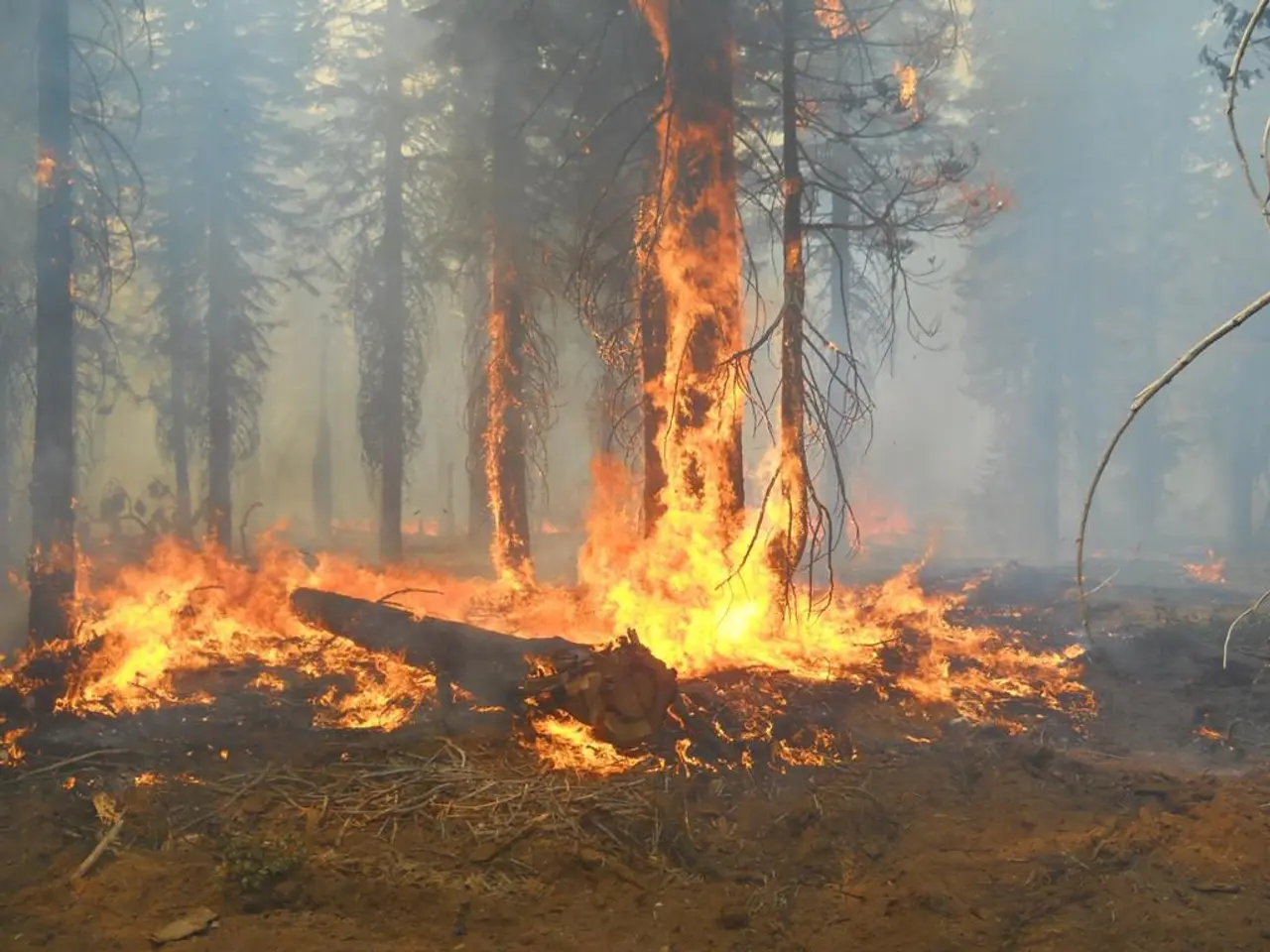Portugal Battles Intense Forest Fires
Portugal, a country that has faced the wrath of devastating wildfires in the past, has taken significant strides in wildfire prevention and reforestation. These efforts, implemented since the 2017 wildfires, have not only improved the country's firefighting capacity but also served as a model for other European nations.
Verónica Catarino, head of a special training program at the national firefighting school, is one of the key figures in this transformation. She teaches students about the intricate relationship between meteorological and geographical factors and wildfires.
In the town of Santa Comba Dão, André Mota, a volunteer firefighter, lived through the devastating wildfire that reached the town on October 15, 2017. Today, he is responsible for civil protection in his home region of Viseu and coordinates prevention measures.
One of the key initiatives in Portugal's wildfire prevention strategy is the overhaul of professional firefighter training and the mobilization of volunteer firefighters. Portugal now boasts the highest volunteer firefighter force per capita in Europe, with 31,000 volunteers. André Mota is one of these volunteers.
The country has also increased its budget for forest fire protection, more than tripling it from €140 million to €525 million since 2017. This funding has been used to revolutionize surveillance systems, enabling earlier fire detection and faster response times.
Controlled burns, or "fighting fire with fire," have also been employed to actively reduce combustible vegetation and create firebreaks. Miguel Jerónimo, who works for the NGO GEOTA, supports reforestation projects across Portugal, focusing on the southern region of Algarve. He advocates for mixed forests, which he believes are more resilient against fire.
In addition to these measures, strict prevention policies and restrictions on forest access and outdoor activities have been enforced, especially during high-risk periods. Public engagement and community involvement have been crucial in raising awareness and promoting cooperation in fire prevention.
Post-fire forest management and reforestation techniques, including seeding, mulching, soil erosion controls, and the selection of diverse genetic materials for resilience, support sustainable forest recovery. These efforts have significantly reduced the number and severity of wildfires in Portugal and improved firefighting capacity.
The Portuguese approach, combining modern technology, community involvement, increased funding, and proactive land management, is viewed as an exemplary model within Europe. It is influencing strategies in other fire-prone countries to enhance resilience against increasingly severe wildfire seasons.
Here's a snapshot of the English broadcasting hours across various cities on August 20, 2025:
- San Francisco: UTC -7
- London and Berlin: UTC +1 and UTC +2, respectively
- New York: UTC -4
- Lagos: UTC +1
- Nairobi: UTC +3
- Bangkok: UTC +7
- Hong Kong: UTC +8
- Moscow: UTC +3
- Edmonton: UTC -6
These efforts demonstrate Portugal's commitment to a safer and more resilient future against wildfires.
- Portugal's influential approach to wildfire prevention, characterized by community involvement, modern technology, and increased funding, has seen the country become a model in environmental science, particularly in combating climate change, as it impacts weather patterns and increases the risk of wildfires across Europe.
- Verónica Catarino, a key figure in Portugal's wildfire prevention transformation, focuses on teaching students about the relationship between weather, meteorological factors, and wildfires, offering insights essential for scientists working in climate-change studies and environmental science.







